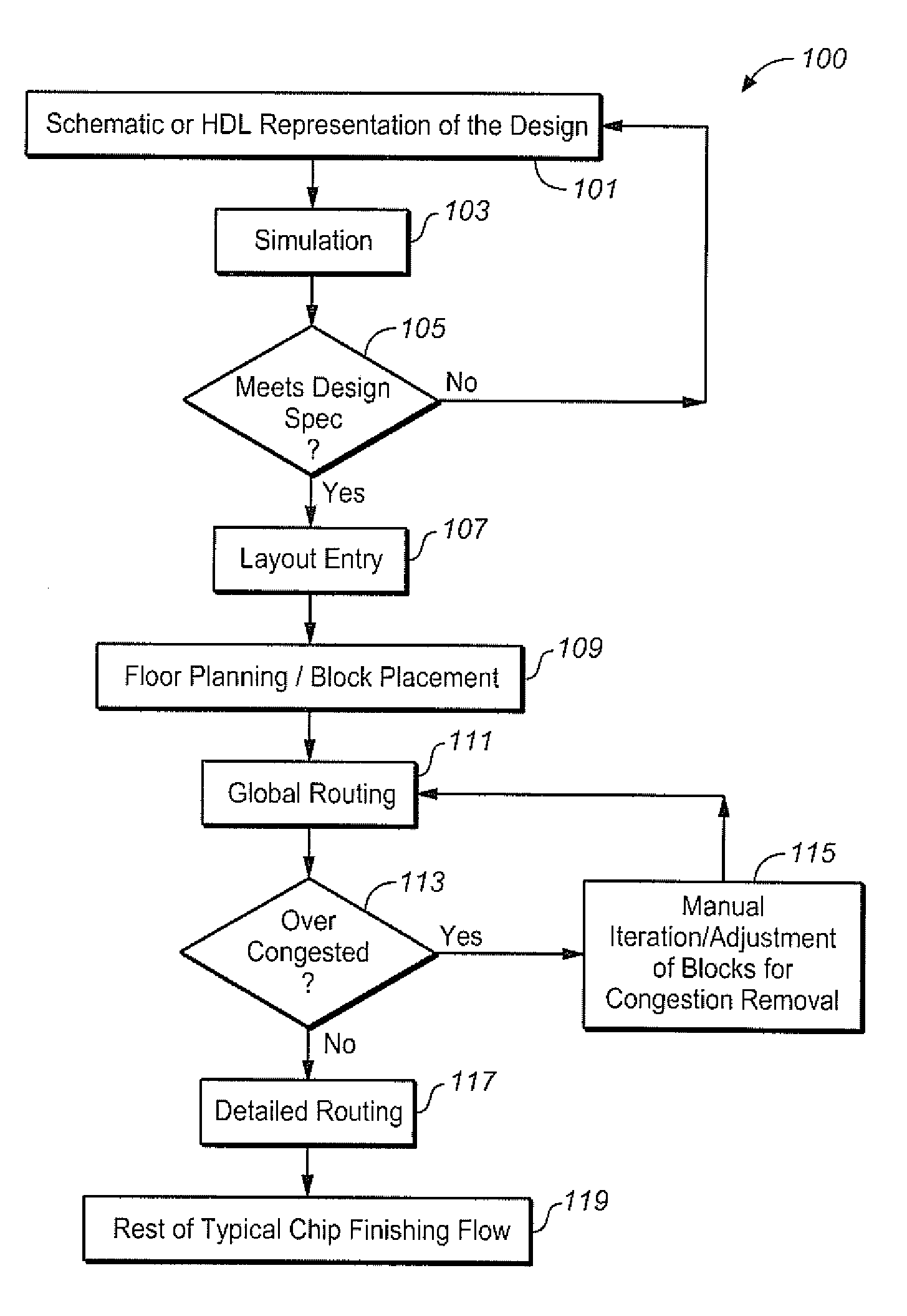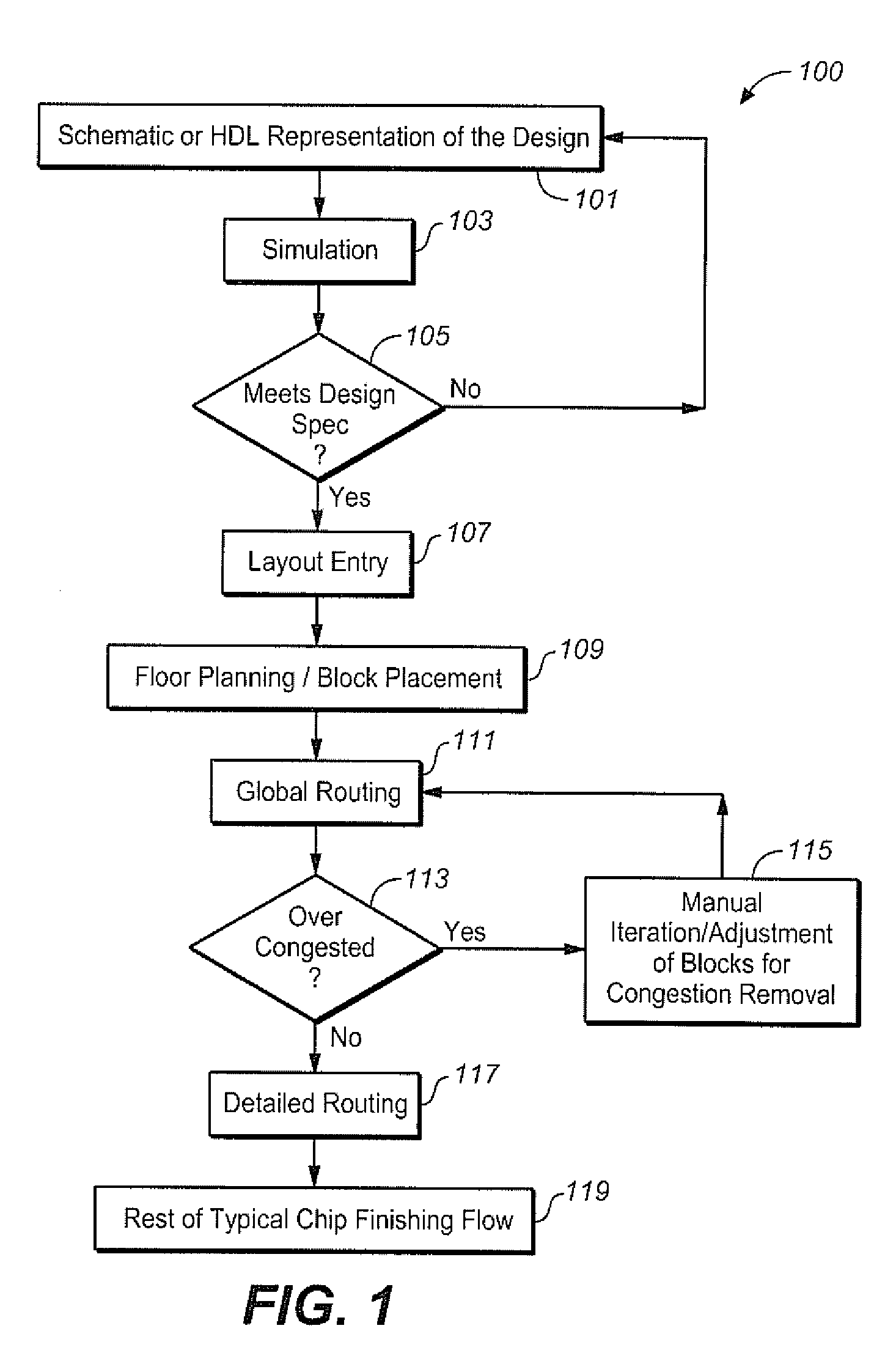Congestion aware block placement
a technology of congestion removal and block placement, applied in the field of automatic integrated circuit design data, can solve the problems of increasing the complexity of custom block placers, cumbersome or near impossible to do, irregular spaces in custom domains,
- Summary
- Abstract
- Description
- Claims
- Application Information
AI Technical Summary
Benefits of technology
Problems solved by technology
Method used
Image
Examples
example embodiments
[0091]FIGS. 17-24 show screenshots of the display on a user's computer, that, along with the usual input devices (keyboard, mouse, etc.) serve as a user interface and represent how congestion is reduced in the design using embodiments of the present invention.
[0092]FIG. 17 shows an exemplary design with three blocks and FIG. 18 shows the congestion after global routing on the same design. In FIG. 18, the areas within the three ovals represent high congestion areas. FIG. 19 represents the modified placement using aspects of the present invention. As shown in FIG. 20, there is no congestion after global routing with the new placement.
[0093]FIG. 21 shows another design with six blocks. After the global routing (211, FIG. 2) it reports congestion at the bottom of the instance “top—1_port_receive”. A closer look at high congestion region (the oval 2101 just right of center at bottom of FIG. 21) is shown in the FIG. 22. FIG. 22 shows that there are three congested GCell in that region. Co...
PUM
 Login to View More
Login to View More Abstract
Description
Claims
Application Information
 Login to View More
Login to View More - R&D
- Intellectual Property
- Life Sciences
- Materials
- Tech Scout
- Unparalleled Data Quality
- Higher Quality Content
- 60% Fewer Hallucinations
Browse by: Latest US Patents, China's latest patents, Technical Efficacy Thesaurus, Application Domain, Technology Topic, Popular Technical Reports.
© 2025 PatSnap. All rights reserved.Legal|Privacy policy|Modern Slavery Act Transparency Statement|Sitemap|About US| Contact US: help@patsnap.com



